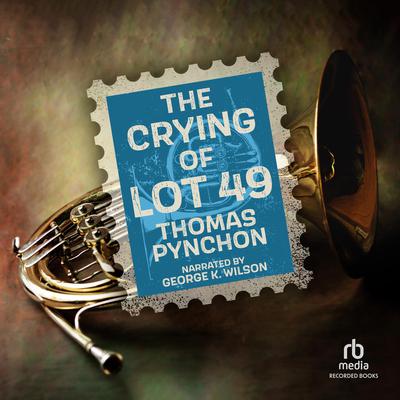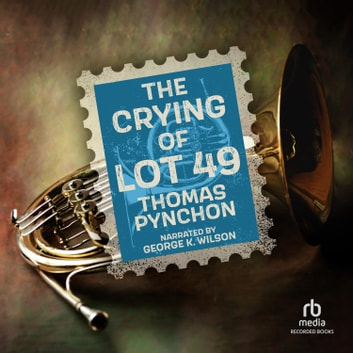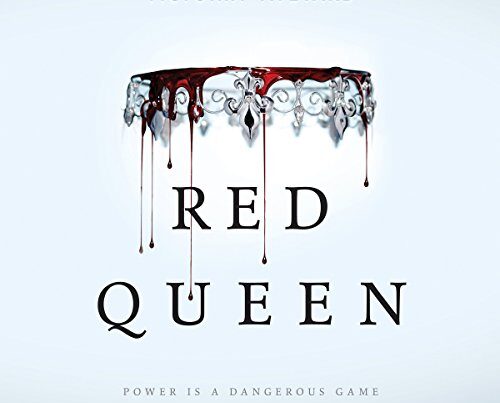Thomas Pynchon’s “The Crying of Lot 49” audiobook captivates listeners with its intricate plot and rich themes. The narration brings the story’s complexity to life.
Thomas Pynchon’s “The Crying of Lot 49” is a seminal work in postmodern literature. The story follows Oedipa Maas as she unravels a convoluted conspiracy involving a secret postal system. This 1966 novel delves into themes of communication, entropy, and societal control.
The audiobook format enhances the experience by adding depth through skilled narration. Listeners can appreciate the intricate wordplay and nuanced characters. Pynchon’s dense and allusive writing style is more accessible in this format. The audiobook is ideal for those seeking a challenging yet rewarding literary journey.
Introduction To Thomas Pynchon And ‘the Crying Of Lot 49’
Thomas Pynchon is a famous American author. He writes complex and dense novels. Pynchon was born in 1937. He studied at Cornell University. Pynchon is known for his secretive life. He rarely makes public appearances. His books mix many genres. They often include mystery and science fiction. Pynchon has won many awards. He is celebrated for his unique style. Many readers enjoy his challenging stories.
‘The Crying of Lot 49’ is a short novel by Thomas Pynchon. It was published in 1966. The story follows Oedipa Maas. She discovers a secret postal system. This system is called Tristero. The book is filled with clues and puzzles. It explores themes of communication and conspiracy. Many readers find it engaging and thought-provoking. The novel is also known for its rich language. Pynchon uses many symbols and metaphors. ‘The Crying of Lot 49’ remains a popular book. It is often studied in schools and universities.
The Cultural Impact Of The Novel
Thomas Pynchon’s novel greatly influenced postmodern literature. Many writers followed his style. They adopted his complex narrative and themes. The book’s unique structure and playful language are now hallmarks of the genre. Scholars often study it to understand postmodernism. The novel’s paranoid themes resonate with many readers. Some say it changed how stories are told.
Critics gave mixed reviews to the novel. Some praised its innovation and depth. Others found it too confusing. Readers also had varied opinions. Many loved the mystery and clever writing. Some struggled with its complexity. Despite this, the book remains a classic. It is still discussed and analyzed today.
Main Themes Explored
The story shows a search for truth in a confusing world. Characters try to find meaning in their lives. The book asks if there is any real truth. This quest is full of uncertainty and doubt. Readers are left to think about what is real and what is not.
Many characters feel paranoid. They see hidden plots everywhere. Secret organizations and mysterious symbols fill the story. The book makes readers feel the same paranoia. They wonder if the conspiracies are real or just in the characters’ minds.
Communication is a big theme. Messages in the book are often unclear. Characters find it hard to understand each other. This leads to many misunderstandings. The book shows how difficult it is to interpret the world around us. It makes readers think about how they communicate and understand others.
Characters And Their Development
Oedipa Maas is the main character. She is a housewife who becomes an executor. Her journey starts with a mysterious task. She uncovers secrets and symbols. Oedipa finds a hidden mail system. She meets strange and interesting people. Each encounter changes her. Oedipa becomes more curious and determined. Her journey is full of surprises. She learns a lot about herself.
Many characters support Oedipa. Each one has a special role. Dr. Hilarius is her psychiatrist. He is very odd. Metzger is a lawyer. He helps Oedipa with the will. Mike Fallopian is a historian. He gives Oedipa clues. All these characters shape Oedipa’s journey. They add mystery and depth to the story. Their actions push Oedipa forward. Each role is important. They make the story rich and engaging.
Symbols And Motifs
The Tristero system is a secret postal network. It operates outside the official system. The system symbolizes hidden truths. It connects outcasts and rebels. Tristero challenges the established order. It represents the unknown and mysterious.
W.A.S.T.E. stands for “We Await Silent Tristero’s Empire.” It is a secret communication network. People use it to send messages outside the official channels. W.A.S.T.E. represents rebellion. It symbolizes resistance against control. The system connects people who seek freedom.
The muted post horn is an important symbol. It represents the Tristero system. The horn is often seen in graffiti. It stands for secrecy. The muted horn symbolizes silence and hidden messages. It is a sign of the underground network.

Narrative Style And Structure
The book blends metafiction and intertextuality. Characters often break the fourth wall. They speak directly to the reader. This makes the story feel more interactive. References to other books are frequent. These references add depth to the narrative. The reader discovers new layers of meaning. This technique makes the story unique. It keeps the reader engaged and thinking.
The story does not follow a straight line. Events are out of chronological order. This can be confusing at first. But it makes the story more interesting. Readers need to piece together the timeline. This adds a layer of mystery. It encourages readers to pay close attention. This style keeps the reader on their toes. It makes the story more dynamic.
The Audiobook Experience
The narration style in the audiobook is engaging. The narrator’s voice brings the characters to life. It adds a new dimension to the story. The tone and pace are well-matched to the plot. Listeners can feel the emotion in every sentence. This makes the story more immersive. The narrator uses different voices for each character. This helps in distinguishing them easily. The audiobook experience is unique and captivating.
The print version allows for a personal reading pace. Readers can pause and reflect on complex parts. The audiobook, on the other hand, is faster. It keeps the listener engaged with its dynamic narration. Some may find it easier to understand through listening. Others might prefer the depth of reading. Both versions offer a distinct experience. It’s a matter of personal preference.

Legacy And Continued Relevance
“The Crying of Lot 49” is a key work in Pynchon’s career. It introduced many to his unique style. The book mixes mystery, conspiracy, and dark humor. It is often seen as an entry point to his more complex works. Many fans and critics consider it a must-read. It shows Pynchon’s talent in weaving complex plots.
“The Crying of Lot 49” remains relevant today. Themes of paranoia and information overload are more important than ever. The book speaks to our modern digital age. People still find its messages meaningful. Readers often see parallels to today’s world. It continues to influence writers and thinkers. Its legacy grows with each passing year.

Conclusion
Listening to “The Crying of Lot 49” audiobook offers a unique experience. Pynchon’s intricate storytelling captivates listeners. The audio format enhances the novel’s complex themes. Don’t miss the chance to explore this literary masterpiece. Grab your copy today and dive into Pynchon’s enigmatic world.



